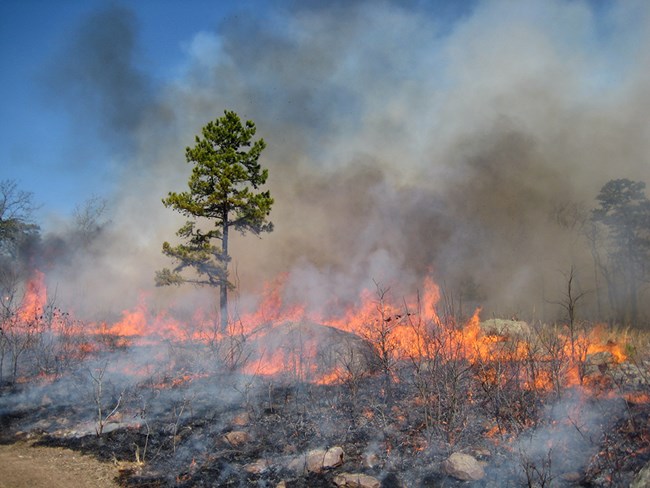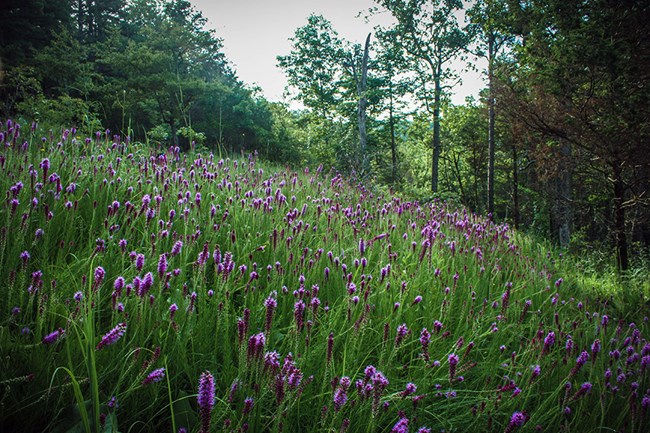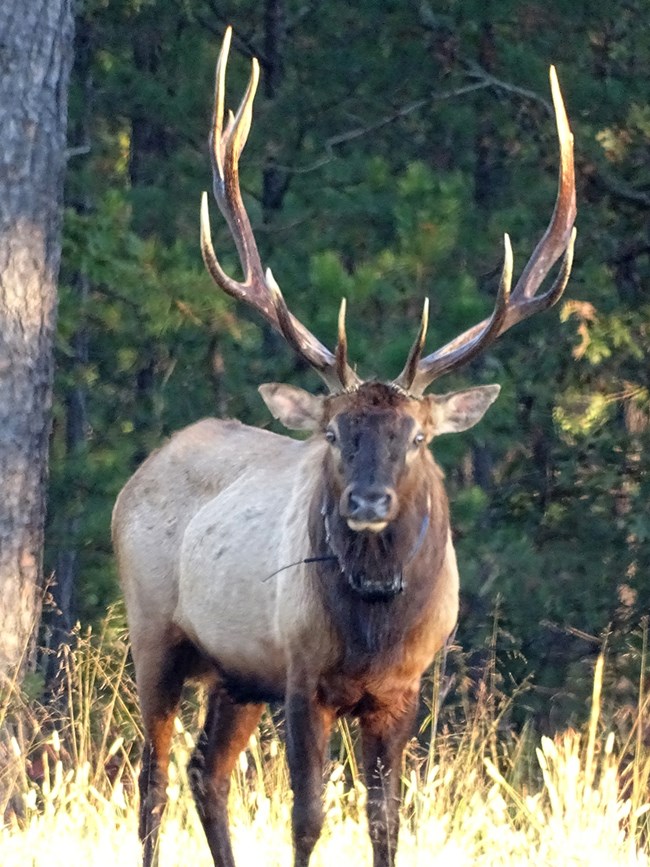Last updated: December 15, 2021
Article
Twenty-one Years of Fire Effects Data Shows Great Success at Ozark National Scenic Riverways (ONSR), Missouri

NPS, Dan Drees
In 1999, managers at Ozark National Scenic Riverways (ONSR) recognized that without fire, the diversity and abundance of native wildflowers and grasses in glades and woodlands were rapidly disappearing. That year, prior to taking any fire management actions, they established monitoring plots to study fuel reduction and restoring fire to Ozark habitats. Over two decades later, in 2020, the NPS fire ecology program collected post-burn data from those established plots.
Twenty plus years ago, without fire, trees and woody shrubs were becoming unnaturally abundant and shading out plants that require strong sunlight. The goal was to obtain at least a 40% increase in the number of native wildflower and grass species following prescribed fire.
By 2020, 32 of the 62 monitoring plots had burned five to six times. The average increase in native wildflower and grass species after five burns was 112% in glades, 182% in dry woodlands, and 119% in moist woodlands.

NPS, Ryan Manuel
Additionally, fire management greatly increased the abundance of native wildflowers and grasses. The average increase in native wildflower and grass abundance after five burns was 92% in glades, 432% in dry woodlands, and 235% in moist woodlands.
Nine species of wildflowers benefitting from fire management here are listed as imperiled or vulnerable in Missouri. Many are significant to butterflies and other pollinators that are declining.
This success inspired grants from the Wildlife Conservation Society, the National Wild Turkey Federation, and the Rocky Mountain Elk Foundation to expand fire management at ONSR. Also, ONSR partnered with the Missouri Department of Conservation, The Nature Conservancy, Pioneer Forest, and several adjoining private landowners to create prescribed fire units that are more efficient and safer than if they only followed park boundaries.

NPS, Dan Drees
Restoring the diversity and abundance of herbaceous plants typically increases wildlife diversity and abundance. Prairie warblers, quail, wild turkeys, and elk are some of the wildlife that show notable preferences for fire-managed glades and woodlands at ONSR.
Recovering viable populations of declining species, before they become endangered, enriches our world, and saves the economic costs associated with reacting when a species is already in crisis.
